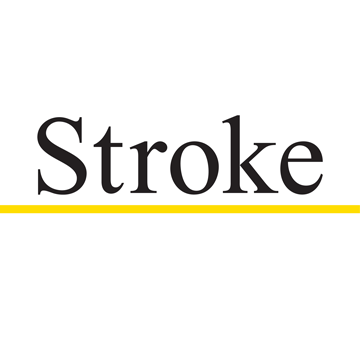Vascular Imaging Optimizes Triage of Stroke Patients for Lifesaving Endovascular Thrombectomy
Key findings
- Vascular imaging completed at a referring hospital optimized selection of stroke patients for endovascular thrombectomy (EVT)
- Using current parameters only 28% of patients meeting guidelines for EVT eligibility (without vascular imaging) eventually qualified for EVT
- Selection criteria for transfer for EVT were optimized at National Institutes of Health Stroke Scale of >8 plus a baseline vascular imaging
- When vascular imaging information was available at a referring hospital, researchers found for every 10 patients transferred in intent for EVT, five should receive EVT and two unnecessary transfers could be prevented
- Quantitative evidence supports an update to current EVT eligibility criteria
Subscribe to the latest updates from Cardiovascular Advances in Motion
Endovascular thrombectomy is a highly effective treatment for acute stroke due to occlusion of large cerebral blood vessels. All patients suspected of stroke at a referring hospital should receive vascular imaging to optimize the transfer decision for endovascular thrombectomy (EVT), according to a study from a Massachusetts General Hospital. The conclusion comes out of the team’s study of EVT eligibility criteria used to decide transfer to a stroke center for thrombectomy.
Reporting in Stroke, the Mass General team found that only 28% of patients (79 of 278) who met the current guidelines for EVT eligibility but did not receive vascular imaging were selected for thrombectomy after transfer.
Currently, there is active debate around how to best ensure stroke patients receive thrombectomy as rapidly and effectively as possible. In this study, Mass General researchers including Lee Schwamm, MD, division chief of Stroke Services, Natalia Rost, MD, director of Acute Stroke Service, and Thabele Leslie-Mazwi, MD, provide quantitative evidence to inform revisions to EVT eligibility guidelines. Study results showed that adding imaging-to-transfer criteria nearly doubled specificity without a loss in sensitivity. Specifically, if vascular imaging information were available at the referring hospital, researchers found that for every 10 patients transferred in intent for EVT, five would receive EVT and two unnecessary transfers would be prevented.
Underscoring the importance of the team’s findings, lead author Gregoire Boulouis, MD, MSc, research fellow in neurology, writes “In resource-constrained healthcare environments, the specificity of the triaging criteria is equally important to the sensitivity mandated by the proven efficacy of the treatment and the important public health consequences of not treating adequate patients.”
To reach their results, the researchers compared triage models used with 508 adult stroke patients transferred to a single stroke center for EVT from 30 referring hospitals between 2010 and 2016. Among the triage parameters considered were American Heart Association/American Stroke Association guidelines including likelihood of a large vessel occlusion and National Institutes of Health Stroke Scale (NIHSS) of ≥6 before transfer. With receipt of EVT being the main outcome variable, the team inspected the patient’s medical records to determine when and why EVT was not given. Also factored into the care path analysis was any imaging. Two independent raters evaluated computed tomography angiography or magnetic resonance angiography done before and after transfer to assess the presence of a dense vessel and vessel occlusion.
The team developed and evaluated a model that achieved the best tradeoff between sensitivity and specificity. This model includes evidence of large vessel occlusion from vascular imaging from the referring hospital and an NIHSS of > 8 points. Overall, factors most associated with delivery of EVT at arrival at the stroke center included simulating vascular imaging along with younger age, higher NIHSS, and higher initial Alberta Stroke Program Early CT Score.
Given the impact of vascular imaging in this study, the Mass General team may have identified a key indication for revising the current guidelines.
view original journal article Subscription may be required
Refer a patient to the Fireman Vascular Center
Learn more about Mass General’s Stroke Services
